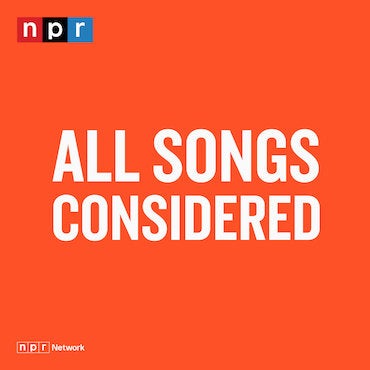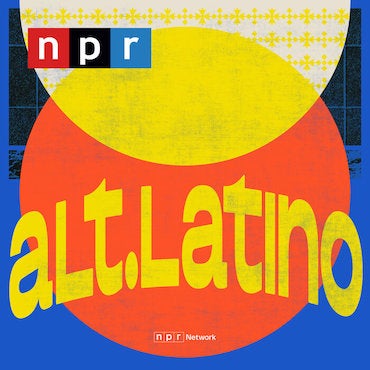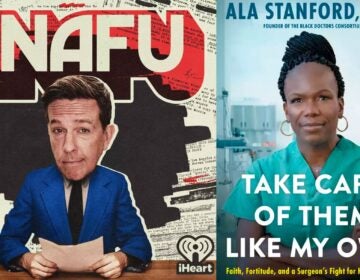Remember when swimsuits weren't allowed? A history of nude swimming
While it might be unbelievable today, boys were once required to swim nude at YMCA pools — yet some recall the experience with no shame.
Listen 11:14
Boys swimming at the Jerusalem Y.M.C.A (G. Eric and Edith Matson Photograph Collection, Library of Congress, Prints & Photographs Division, LC-DIG-matpc-22514.)
This story is from The Pulse, a weekly health and science podcast. Subscribe on Apple Podcasts, Spotify, or wherever you get your podcasts.
Find our full episode on shame here.
Creed Erickson was born in 1954, and grew up in a small town in Northwestern Pennsylvania. Like many of us, he took swimming lessons at the local YMCA when he was a kid.
“It was a four story big brick building.” Erickson remembered. “It was about a dozen of us in the swim classes. And we went through the Y program of minnows and fish and sharks and all that kind of stuff.”
Oh, and one more little detail.
“It was all nude swimming.”
Erickson’s swim classes at the Y were full of naked boys. Bathing suits not only weren’t required — they weren’t even permitted.
“It was no big deal”, said Erickson.
“Getting my head under the water was a bigger deal than that. Everybody was doing the same thing … all the kids were nude and that was just the way it was.”
I stumbled on this little known fact years ago, and scouring different online discussion forums, I basically found two types of people. Most were flabbergasted, and incredulous that this ever happened. But those who lived through it confirmed that indeed, through the first half of the 20th century, nude swim classes — mainly those for white boys and white men —were, as Erickson described — just the way it was.
There are a few reasons, linking back to the late 1800’s, when indoor public pools were first being built in the U.S. Swimsuits were heavy and made up of material that clogged pool filters. They cost money, which many families didn’t have, and the suits also carried germs.
The 1926 American Public Health Association (APHA) guidelines for pool maintenance read:
“At indoor pools used exclusively by men, nude bathing should be required. At indoor pools used exclusively by women, bathing suits should be of the simplest type.”
“State Departments of health pretty much followed APHA guidelines,” explained Brad Thompson, an amateur historian with a particular interest in public swimming pools.
“And that was the foundation for most of the practices followed by public schools and institutions.”
There were always some pools that required, or at least allowed swimsuits. But even after the APHA changed its guidance in 1962, nude swimming still took quite some time to fade away. Some classes were nude up through the 1970’s, or even 80’s.
Sometimes the male teachers were nude too. Occasionally there were female teachers, who wore swimsuits themselves. And often, family members, including girls and women, watched the naked boys practice or compete in swim races.
“It’s just a different era and different perspective.” Thompson said.
It can be hard to wrap one’s head around that perspective, and imagine a high school swim class in the 21st century where swimsuits are prohibited. How do we explain the drastic cultural shift that’s taken place in the past few decades?
Laying bare the history
“I think there’s a lot of assumptions that we’re hostile to the nude body, but it’s actually way more complicated when you go back in time.” said Brian Hoffman, author of the book, “Naked, A Cultural History of American Nudism.”
“Even predating the YMCA, especially in New York City, there is a history of nude bathing, especially in the summer in the Hudson or the East River where people did not have indoor showers and bathrooms.”
Brian said when indoor pools started being built in the late 1800’s and early 1900’s, swimming became attached to ideas of fitness and health.
“These swimming pools, they’re under the auspices of the YMCA, the Young Men’s Christian Association, which is trying to encourage men not only to be physically fit, but also mentally without sin, without shame, that they would correct some of these illicit behaviors happening in urban America— especially amongst immigrants and the working class. So the naked body and swimming naked … wasn’t inherently sinful. And that’s under a Christian banner.”
Particularly for children, being nude was associated with innocence and purity. And that persisted for decades.
Subscribe to The Pulse
Brad Thompson, the amateur historian, points to the title scene from “Pollyanna,” a G-rated Disney film that was popular during his childhood.
“The opening credit is a naked boy from foot to head, maybe 9, 10; his buttocks in full view on a rope swing swinging out over a river, and he drops into a dozen more boys swimming around naked.”
As Thompson pieced together his DIY historical record of nude swimming, he found the 1960 film to be indicative of societal values at that time, which have drastically changed.
“If a movie production company did that today, my goodness, can you imagine the heat they would draw for it?”
The cultural cover-up
Author Brian Hoffman says there were a few different cultural shifts that chipped away at the innocence associated with nakedness. Some hippies stripped down to protest the establishment—especially women, who had rarely been given the same free reign at public pools as men. So nudity became a rebellious, counterculture signifier. Around the same time, adult magazines like Playboy and Hustler were becoming more popular, and several court decisions led to the mainstreaming of pornography. The unclothed human body was now widely available for consumption, and for profit.
“The selling of the body, and the intent to sell it for illicit purposes is what starts to make nakedness shameful or wrong,” said Hoffman.
“The commercialization of the naked body, but also its use for protest and the political statement and critique makes it impossible to see the naked body as this kind of innocent thing, free of shame.”
For a while, children got a pass on the increasing baggage placed on grownup bodies. Skinnydipping at the river was still a right of passage. Group showers in the locker rooms may have led to some teasing, but were still widespread.
“If it was sex segregated, if it was among kids, it was generally accepted that those naked bodies were not shameful,” Hoffman said.
“It is only more recently with the emergence of the internet, with the emergence of the culture wars, that the naked body of children is seen as a real source of illicit sexuality. And that’s the new line; that the naked body of children needs to be protected because it is just too vulnerable to exploitation.”
Was there more pedophilia in the days of mandatory nude swimming? Those statistics don’t exist. Did people — and to be specific, it was mostly white, male swimmers at these pools — feel more secure in their body image because they were forced to spend time together naked? Browse the internet forums, and you’ll get a mix of memories. Some people from that bygone era say they hated it. Others like Creed Erickson say for them there’s nothing but happy memories — and it felt natural.
“I think you need to stop looking at nude boys swimming or nude children swimming and look around and (ask), ‘What is happening here? Is this a good activity? Is this not a good activity? Are they being supervised well? Is anything untoward appearing before your eyes?’ If not, then what’s the shame of it? You know, there really isn’t.”
Erickson says he’s never been hung up on how his body looks, and thinks those swim classes at the YMCA could be part of the reason. But a few minutes after our interview he sent me an email. He wanted to add something he thought was relevant to this story, so I called him back.
“During the interview you asked if there was any black kids at the Y,” Erickson explained to me.
“As I was growing up, Warren was a sundown town; didn’t want any blacks in it, especially past sundown. And I am more ashamed of growing up in that kind of environment than jumping in a pool with nude boys ever could make me.”
WHYY is your source for fact-based, in-depth journalism and information. As a nonprofit organization, we rely on financial support from readers like you. Please give today.






